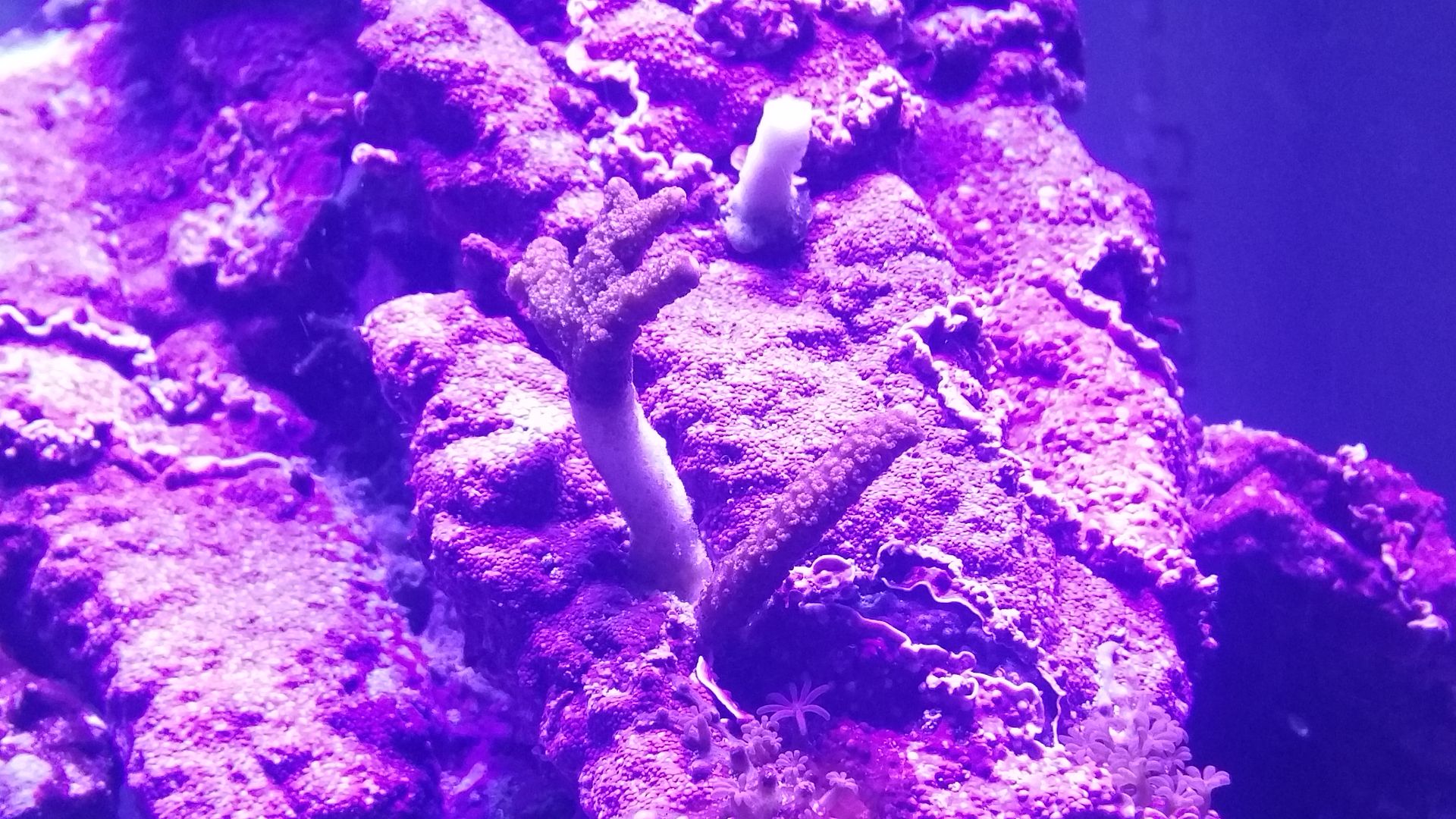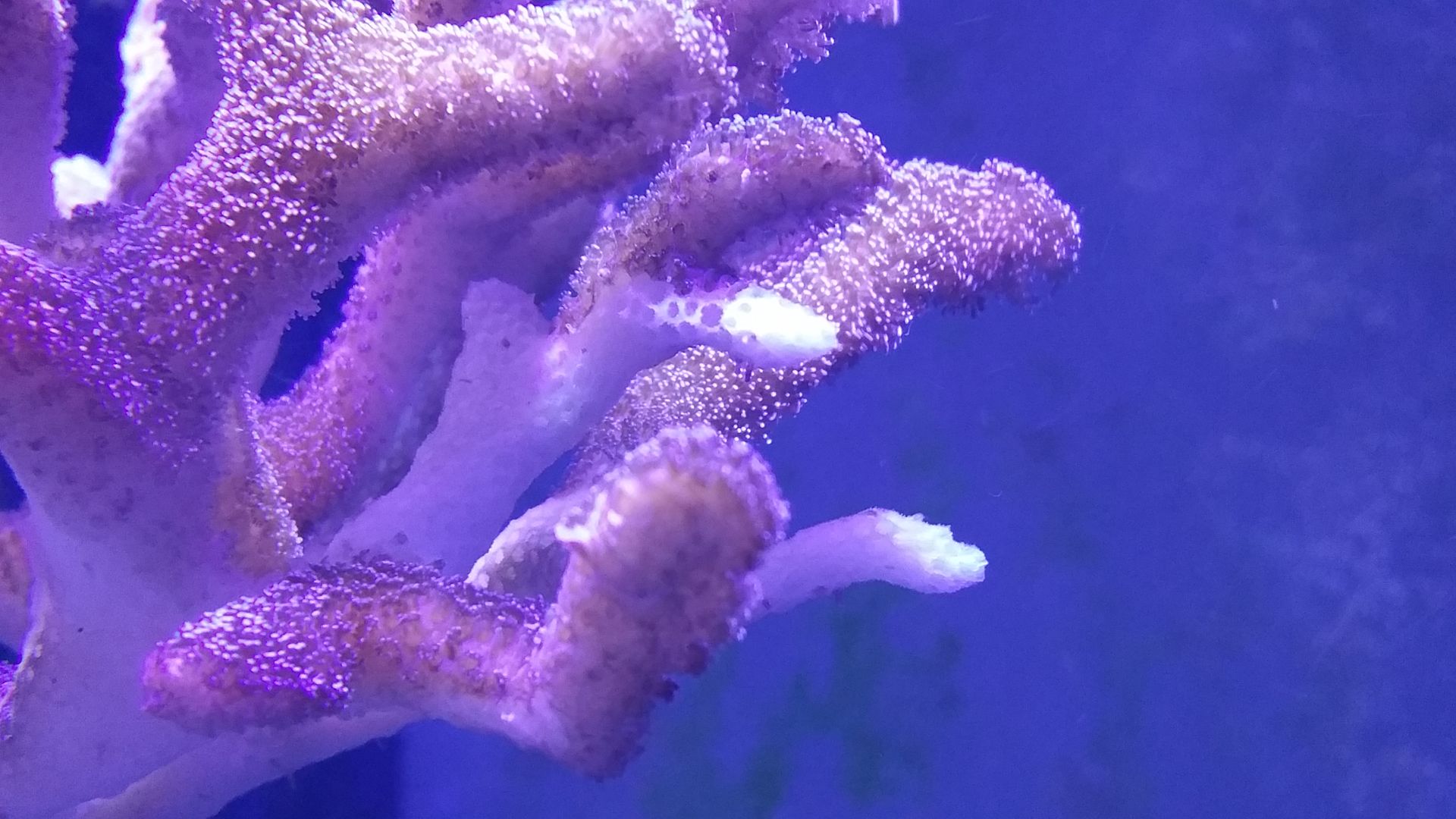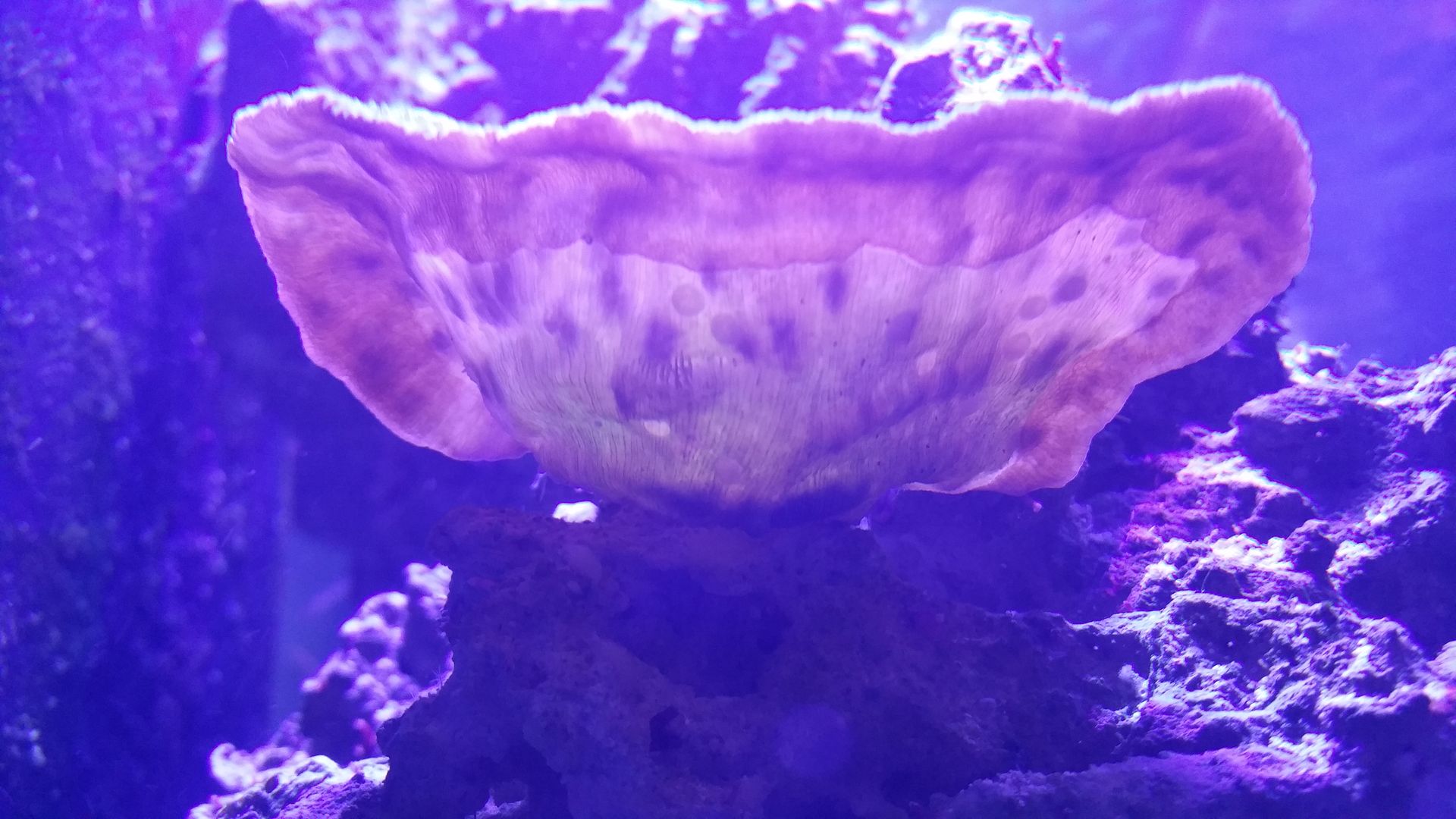puffermike
Active Member
I've been battling some issues with STN for a very long time and I'd like to get some insight on it. I'll first give the specs on my old system where it happened and the new specs on my upgrade to compare.
My old tank params
Sal - 1.026
Nitrates - 10
Calc - 420
Alk - 9
Mag - 1250
Temp - 75
PH - 8.0
This tank ran a relatively small HOB skimmer, two Hydor powerheads that pushed about 1200G each, a canister filter with chemi pure, purigen and diligent water changes to keep the tank stable. Lighting was LEDs set to a max of 60%.
With these params in my old tank I was able to lose quite a bit of colonies. First it was LPS only pertaining to Euphlyia and then eventually it made it's way onto my SPS. Frogspawns and torches went down very slowly at a rate of 2 weeks to 2 months. When it did hit my acros it took about a month to kill them off. What remained unaffected was a good bit of my other LPS such as Lobophylia, Elegance and Acans. The SPS that survived was a few varieties of Stylophora and Birdsnest also.
I made a substantial upgrade to a 125G tank with a sump over the winter. I transferred over some of the live rock from the old tank but the majority of it was new.
New Tank Params
Sal - 1.026
Nitrates - 5 or less
Calc - 480
Alk - 10
Mag - 1350
Temp - 76
PH - 8.0
The livestock in the tank are a blue hippo tang, desjardini tang, naso tang, yellow watchman goby, mandarin goby and a copperband butterfly. I recently took out a niger trigger just in case he's been nibbling on any of the SPS. I have a tank cam that I can go through and watch the majority of activity in the tank and I've never seen him put SPS on the diet.
This tank runs a very large skimmer rated for 300G's, two X150 Gyres that I have set to push about 6,000GPH total, 3 - DM165P LED units and the only media that I use now is GFO and Carbon.
I just recently installed a dosing pump because I'm still struggling with STN. My dosing pump is set to dose a total of 2 DKH weekly and the equal measurement of calcium. I programmed this last week so I don't believe it has anything to do with the STN issue.
However to clarify I'm dosing the following as of a couple weeks ago.
Calcium
Alkalinity
Carbon - Red Sea Formula
The new carbon dosing has done substantial work in decreasing my nitrates down but the STN has not changed at all. The colonies of birdsnest I transferred over from my old tank into this one survived well and even got some great growth on them for the first couple months but after those two initial months they slowly lost all of their tissue and died.
As of right now I can not keep any type of birdnest or branching montipora.


My large Stylophora colony is losing tissue on the tips and on the bottom but it's been fighting back very well. Whatever the issue is it hasn't been strong enough to take out this colony.

It hasn't effected any of my LPS in this tank at all. In fact the LPS in here is doing amazing. The gorgonians and even my flower pot corals are growing well. It did however attack my chalice coral to the point where it ate away all of the flesh on the underside of the coral but the moment it reached the upper lip it stopped and has begun to heal.
You can clearly see the line of flesh growing back down towards the base.

I am a bit perplexed at this issue as I've been trying to go down the line and figure out what exactly is causing this. I've checked for parasites on numerous occasions and I haven't been able to spot anything. I've only been able to save a few random colonies through vigorous iodine dipping but the issue comes back only to attack other specimen in the reef.
If anyone has any advice or experiences like mine please give me your advice it would be greatly appreciated.
My old tank params
Sal - 1.026
Nitrates - 10
Calc - 420
Alk - 9
Mag - 1250
Temp - 75
PH - 8.0
This tank ran a relatively small HOB skimmer, two Hydor powerheads that pushed about 1200G each, a canister filter with chemi pure, purigen and diligent water changes to keep the tank stable. Lighting was LEDs set to a max of 60%.
With these params in my old tank I was able to lose quite a bit of colonies. First it was LPS only pertaining to Euphlyia and then eventually it made it's way onto my SPS. Frogspawns and torches went down very slowly at a rate of 2 weeks to 2 months. When it did hit my acros it took about a month to kill them off. What remained unaffected was a good bit of my other LPS such as Lobophylia, Elegance and Acans. The SPS that survived was a few varieties of Stylophora and Birdsnest also.
I made a substantial upgrade to a 125G tank with a sump over the winter. I transferred over some of the live rock from the old tank but the majority of it was new.
New Tank Params
Sal - 1.026
Nitrates - 5 or less
Calc - 480
Alk - 10
Mag - 1350
Temp - 76
PH - 8.0
The livestock in the tank are a blue hippo tang, desjardini tang, naso tang, yellow watchman goby, mandarin goby and a copperband butterfly. I recently took out a niger trigger just in case he's been nibbling on any of the SPS. I have a tank cam that I can go through and watch the majority of activity in the tank and I've never seen him put SPS on the diet.
This tank runs a very large skimmer rated for 300G's, two X150 Gyres that I have set to push about 6,000GPH total, 3 - DM165P LED units and the only media that I use now is GFO and Carbon.
I just recently installed a dosing pump because I'm still struggling with STN. My dosing pump is set to dose a total of 2 DKH weekly and the equal measurement of calcium. I programmed this last week so I don't believe it has anything to do with the STN issue.
However to clarify I'm dosing the following as of a couple weeks ago.
Calcium
Alkalinity
Carbon - Red Sea Formula
The new carbon dosing has done substantial work in decreasing my nitrates down but the STN has not changed at all. The colonies of birdsnest I transferred over from my old tank into this one survived well and even got some great growth on them for the first couple months but after those two initial months they slowly lost all of their tissue and died.
As of right now I can not keep any type of birdnest or branching montipora.


My large Stylophora colony is losing tissue on the tips and on the bottom but it's been fighting back very well. Whatever the issue is it hasn't been strong enough to take out this colony.

It hasn't effected any of my LPS in this tank at all. In fact the LPS in here is doing amazing. The gorgonians and even my flower pot corals are growing well. It did however attack my chalice coral to the point where it ate away all of the flesh on the underside of the coral but the moment it reached the upper lip it stopped and has begun to heal.
You can clearly see the line of flesh growing back down towards the base.

I am a bit perplexed at this issue as I've been trying to go down the line and figure out what exactly is causing this. I've checked for parasites on numerous occasions and I haven't been able to spot anything. I've only been able to save a few random colonies through vigorous iodine dipping but the issue comes back only to attack other specimen in the reef.
If anyone has any advice or experiences like mine please give me your advice it would be greatly appreciated.
Last edited:


